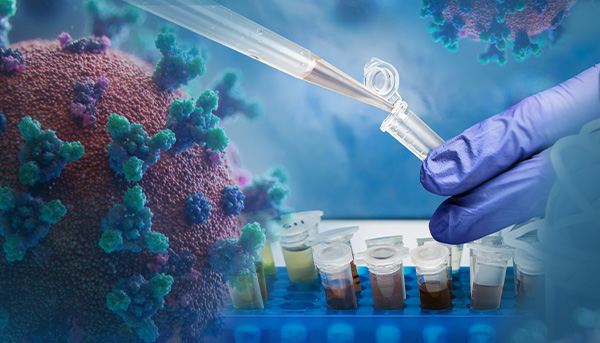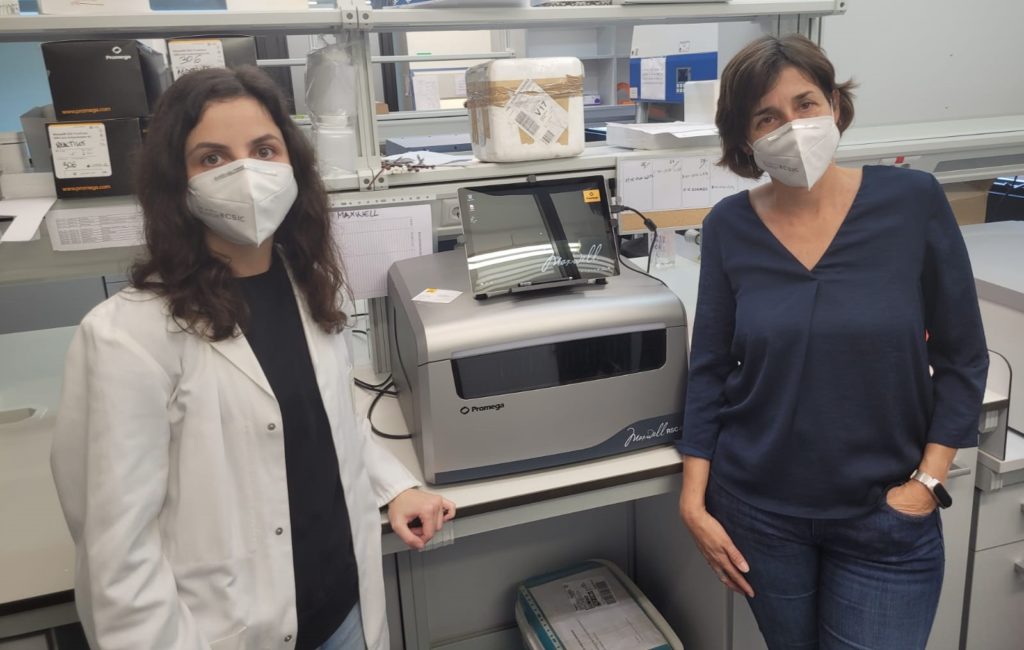
Wastewater surveillance of SARS-CoV-2 is an increasingly common method for monitoring the spread of COVID-19 within a community. As researchers and public health officials around the world are working together to set up wastewater surveillance systems, there is an urgent need to establish standard SARS-CoV-2 detection methods.
A key leader in this new field is Dr. Gloria Sanchez. She is a tenured scientist at the Institute of Agrochemistry and Food Technology, a center within the Spanish National Research Council. Before the COVID-19 pandemic, her team focused on detecting human enteric viruses in food and water. But soon, detecting SARS-CoV-2 in wastewater became their main focus.
Wastewater Surveillance in Spain
In March 2020, Dr. Sanchez began testing wastewater samples in Murcia, a city located in southeastern Spain. Their results showed that SARS-CoV-2 could be detected in wastewater 12–16 days before the first clinical cases were reported, suggesting that wastewater surveillance can be an effective tool to predict the prevalence of COVID-19 in communities. In a second study, they analyzed the wastewater in the city of Valencia, where the first death in the country was thought to occur on February 13, 2020. Because authorities assumed that there was no community transmission, lockdowns were not enforced until March 15. However, when Dr. Sanchez’s team analyzed wastewater samples, they were able to detect SARS-CoV-2 as early as February 24, suggesting that community transmission occurred much earlier than previously suspected. At the time, Spain had the second highest number of confirmed cases in the world. Their results emphasize the importance of establishing wastewater surveillance of SARS-CoV-2 to identify and prevent larger outbreaks.
Although Dr. Sanchez had great success in these initial studies, the wastewater testing methods her team used were originally developed for detecting norovirus and hepatitis A virus, so further optimization was needed. They continued to test and compare different methods for each step: sample concentration, RNA extraction and RT-qPCR detection. They shared their results in a recent publication.
Wastewater Sample Concentration
The first step in SARS-CoV-2 detection in wastewater is to concentrate the wastewater sample. Dr. Sanchez’s group tested two different methods for sample concentration: aluminum-based adsorption precipitation and polyethylene glycol (PEG) precipitation. They found that the two methods generated similar results but, because the PEG method requires an overnight incubation, the process time was much longer. Thus, they selected the aluminum-based adsorption-precipitation as their choice concentration method.
SARS-CoV-2 RNA Extraction
For the RNA extraction step, the team started with a manual column-based method. However, they were overwhelmed with the high number of samples that needed to be processed, so they looked into an automated system. They had used the Promega Maxwell® RSC Purefood GMO and Authentication Kit with the Maxwell® Instrument for extracting human enteric virus RNA, so they tested the same method for extracting SARS-CoV-2 RNA. After a few comparison trials and optimization steps, they were able to achieve similar results using the automated Maxwell® method compared to the column-based method—but with minimal time and effort. “The main advantages of the Maxwell® method are good performance, time savings and versatility,” says Dr. Sanchez. “You can process from 1 to 48 samples, so this is important in research labs where the numbers of samples to be analyzed is not constant.” The Maxwell® protocol has been included in the official SARS-CoV-2 Detection in Wastewater Protocol recommended by the Spanish Ministry of Environment.

SARS-CoV-2 Viral Detection
To detect the amount of RNA in the sample, Dr. Sanchez’s team compared RT-qPCR protocols using various gene targets. They tested two targets in the nucleocapsid (N1, N2), one in the envelope protein (E), and two in the polymerase (IP2, IP4). They found that the N1 target was the most sensitive target, resulting in the highest percentage of positive replicates (77%).
Besides RT-qPCR, RNA sequencing is another emerging method for detecting SARS-CoV-2 variants in wastewater. “RT-qPCR is a fast method to detect defined mutations. Sequencing will allow us to detect existing mutations as well as new mutations, but it is more expensive and time-consuming,” says Dr. Sanchez. More research will be needed before sequencing can be used for routine detection of SARS-CoV-2.
Developing Standard Methods
So, what is the best method for detecting SARS-CoV-2 in wastewater? “I don’t think we can say there is a best method. We need to have a panel of methods that work with certain criteria,” says Dr. Sanchez in a recent webinar. “A standard method establishing the performance characteristics is crucial so we can develop alternative methods and compare them against these standards. The standards need to clearly define the criteria of recovery, inhibitors, limits of detection and quantification, and number of targets to be determined,” she says. In the past year, she played a key role in establishing a standard SARS-CoV-2 detection protocol in Spain, one of the first government-recommended standard protocols in the world. The next step would be to establish standard methods globally.
Even as COVID-19 vaccines are being rolled out around the world, wastewater surveillance will not go away. In fact, earlier this year the European Commission recommended that all member countries put in place a national wastewater surveillance system as soon as possible. In the future, wastewater surveillance will continue to be an integral tool for monitoring new SARS-CoV-2 variants and other emerging pathogens.
Learn more about detecting SARS-CoV-2 in wastewater in these webinars and blogs:
Sentinel Surveillance of SARS-CoV-2 in Wastewater is Here to Stay: A panel of international experts discuss the current state and challenges of wastewater surveillance.
Simple Methods for Wastewater Testing to Track COVID-19: Learn about fast, easy methods for wastewater sample concentration, viral nucleic acid extraction and RT-qPCR detection.
Automation Helps a Graduate Student Monitor COVID-19 with Wastewater. (blog)
Using Wastewater Surveillance to Track COVID-19 Outbreaks (blog)
Related Posts
Latest posts by Johanna Lee (see all)
- Microfluidic Organoids Could Revolutionize Breast Cancer Treatment - March 25, 2025
- Bacteria From Insect Guts Could Help Degrade Plastic - January 28, 2025
- A Diabetes Drug, Metformin, Slows Aging in Male Monkeys - December 19, 2024

2 comments